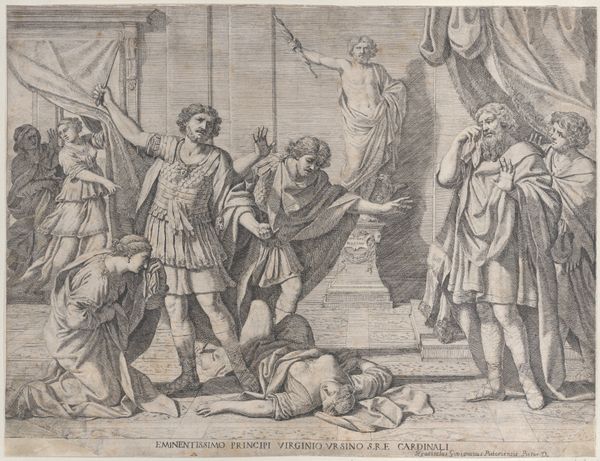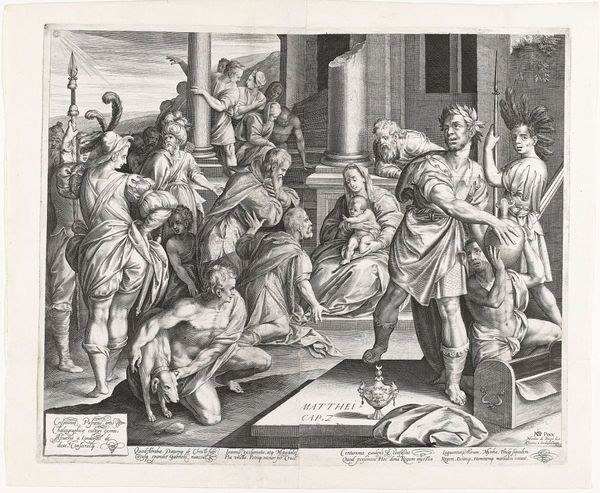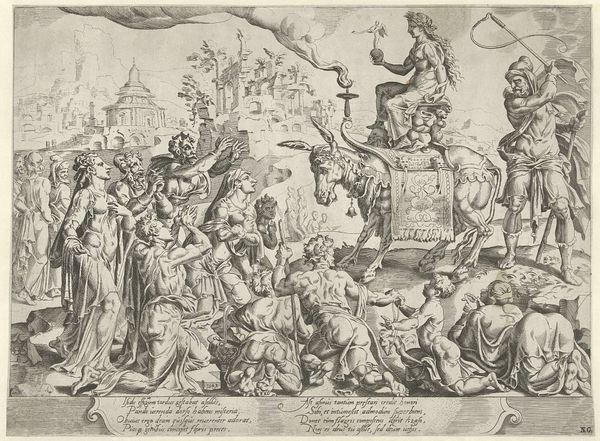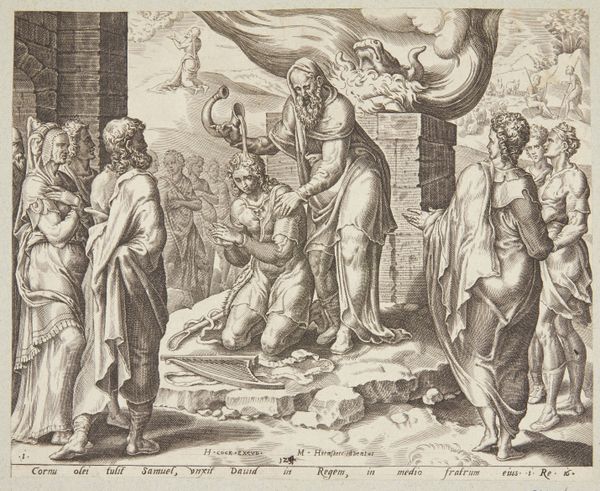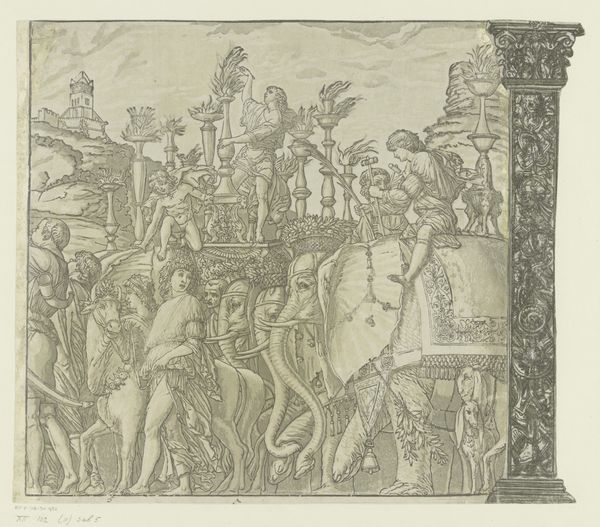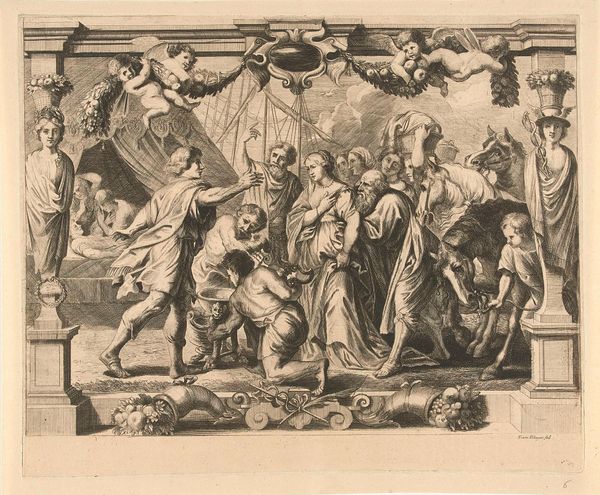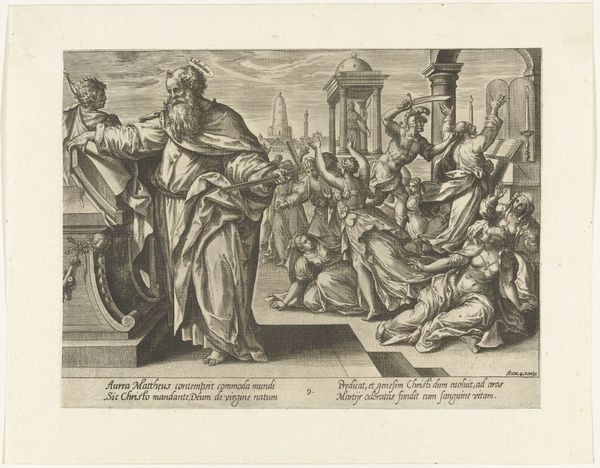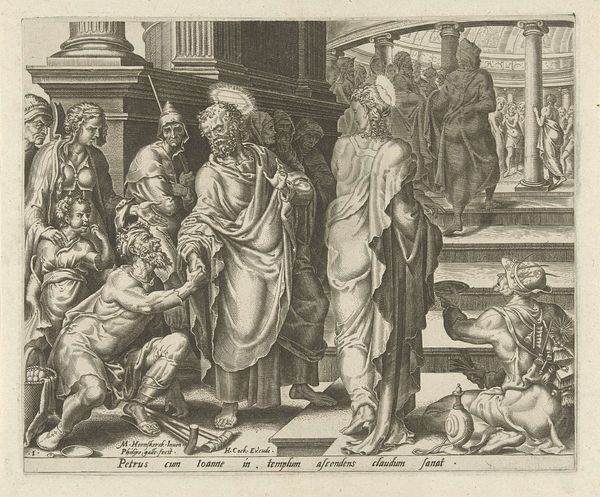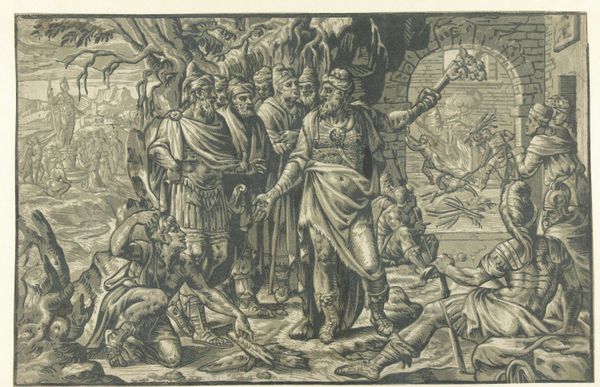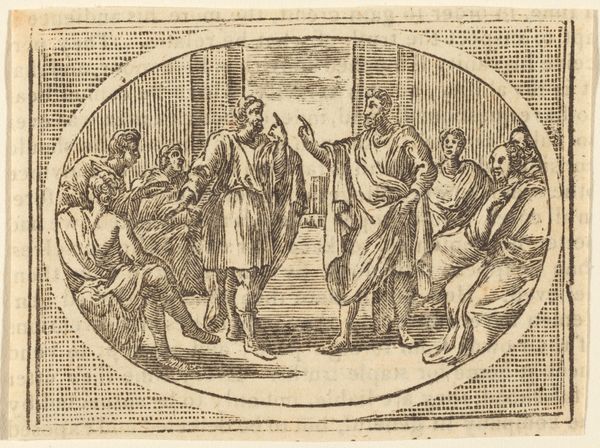
Dimensions: height 241 mm, width 388 mm
Copyright: Rijks Museum: Open Domain
Editor: This is “Ancius de Augur,” a 1545 engraving by Nicolas Beatrizet, currently at the Rijksmuseum. I’m immediately struck by the dynamic scene and the sheer number of figures crammed into this relatively small space. What do you see in this piece, beyond just the surface representation? Curator: As a materialist, my interest is piqued by the production of this print itself. Consider Beatrizet’s labor: the deliberate etching, the physical act of creation, and the socioeconomic forces enabling its dissemination. We also must account for Pollidor’s role "inventing" this scene, which seems related to antique sculpture. Editor: Right, it's not just *what* is depicted, but how it came to be. Are you saying that looking at the physical making of the print gives it meaning? Curator: Absolutely. Think about the access to materials like copper, acid, and paper, not to mention the training required for such a specialized craft. How might those factors have shaped the work’s availability, and who could consume it? What are the networks of knowledge and commerce this object occupies? Editor: So, by looking at the materials and methods, we're not just looking at the artist, but also at the broader societal factors. Is there any social context behind why they depicted that particular scene with those clothes at that moment? Curator: It gives us insight into how artistry functions as work, and allows us to analyze power dynamics within that era's economy of images and printmaking. By deconstructing the work into labour, it's removed from traditional notions like taste or beauty and invites closer historical inquiry. Editor: I hadn’t considered the economics of printmaking and its relationship to the artwork itself. It’s interesting to shift the focus from pure artistic vision to the actual work and materials that brought it into being. Curator: Precisely. By engaging with those things and conditions you begin to see how artistic traditions are actually socially constituted material facts, as opposed to rarified expressions detached from quotidian human action.
Comments
No comments
Be the first to comment and join the conversation on the ultimate creative platform.
